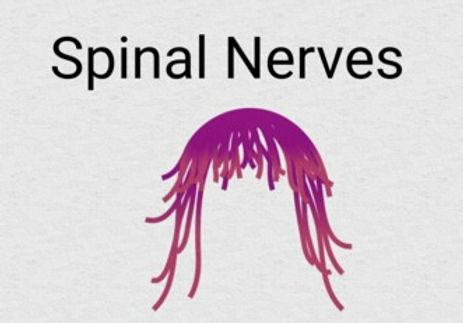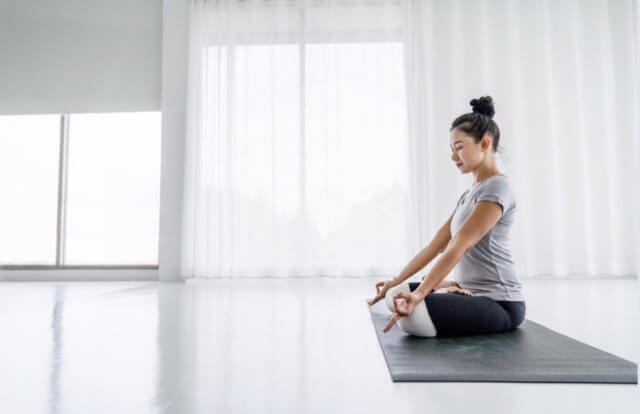Author: Randeep Singh / go to all articles on Yoga cure
Yoga for spinal nerves:
The spinal cord is the extension of the brain, which descends into the protective armor of the vertebral column.
In order to reach further to the last tissues of all the body organs, parts the spinal cord again divides itself along its length into spinal nerves, which emerge from the spaces between the adjacent vertebrae (intervertebral foramen).
Yoga for spinal nerve helps keep the spaces from which these nerves emerge free of any obstructions.
The vertebral column is made up of 33 vertebrae, we have 31 pairs (one from each side of the joining point of the two vertebrae) of spinal nerves emerging from below each vertebrae , with only one exception of the first spinal nerve which emerges from the top of the first cervical vertebra and all the subsequent spinal nerves emerge from below the respective vertebrae.
This way we have 8 cervical nerves (C1 – C7 + one from over the C1), 12 thoracic nerves ( T1-T12), 5 Lumber nerves ( L1- L5), 5 Sacral nerves ( S1-S5), and 1coccygeal nerve which emerges from the coccygeal bone, the tail bone.
A group of 8 nerve root fibers emerge from each of the posterior ( dorsal), and the anterior ( Ventral) segments of one half (on one side) of the spinal cord . Taken together the 16 fibers on each side (8 from posterior, and 8 from anterior segment) merge together to form a spinal nerve which extends further to reach that side of the body.
Similarly 16 nerve root fibers merge to form the spinal nerve on the opposite side of the body too, making it a pair of spinal nerves emerging from the same segment of the vertebral column which cover the opposite body regions.
Once the posterior and the anterior nerve roots have emerged to form the spinal nerve they again branch out as the dorsal ramus and the ventral ramus to reach the respective body regions. Each spinal nerve is multi-functional; The same nerve transmits the sensory, motor, as well as the auto monic signals between the body and the spinal cord.
The sensory signals are generally relayed to the posterior nerve roots from the sensory receptors to be directed to the associated center in the brain for interpretation, the motor ( or action oriented commands) signals in response to the sensory signal received is transmitted back to the respective muscles via the anterior spinal nerve root fibers.
A group of spinal nerves originating from a particular section of the spinal cord merge together to form a network complex of these nerves known as the plexus, only to be again branch out as single nerves ahead of the plexus.
Cervical plexus is the first such complex of nerves which emerge from the vertebra C1 – C4. This plexus innervates the back of the head, the neck, the shoulders, and the diaphragm. Phrenic nerve is the most important nerve in this plexus which innervates the diaphragm, any damage to this nerve can impact the person’s ability to breathe.
The next plexus is the brachial plexus which is formed by the merging of the spinal nerves coming from the C5 to T1 vertebrae. Brachial means arms, so these nerves innervate the arm. The important nerves in this plexus are the radial nerve, the ulna nerve and the medial nerve.
The radial nerve passes along the radial bone in the lower arm and ends on the thumb, the ulna nerve extends along the ulna bone of the lower arm and the medial nerve passes through the middle of the both bones and innervates the other fingers of the hand.
Next plexus is known as the lumbar plexus and it is formed by the coming together of the nerves from under the L1 – L4 vertebrae. The lumbar plexus innervates the anterior aspect of the thigh, the medial aspect of the thigh, and the lateral aspect of the thigh, which is the front and the sides of the thigh.
Femoral nerve is the most significant nerve of this plexus. In case the prolapsed disc present in the lumber region pinches upon the femoral nerve from this plexus it can affect the person’s ability to walk. The final plexus is the sacral plexus which is formed by the merging of the spinal nerves coming from under the L4 – S 4 vertebrae.
This plexus innervates the back of the thigh, and everything in the lower leg. The significant nerve of this plexus is the sciatica nerve. In case the sciatica nerve is pinched upon by the edges of the vertebrae from within which it emerges or some tight muscles around it the person will fell a sharp pain radiating down the leg along the path of this nerve.
The nerves emerging from the thoracic region of the spine innervate the ribs, the intercostal muscle and the muscles, and the organs located within the abdominal region.

Yoga Asanas for spinal nerve stimulation
Stretching the nerves with yoga has innumerable benefits to the body and mind of the practitioner. The yoga asanas for spinal nerve health can relieve the pain related to the nerves, increase the circulation of the blood in the blood vessels these nerves are connected to, and dissipate any stress present on the nervous system.
Since the spinal nerves are the starting point of the entire nervous system taking care of their health with yoga must be the top priority of any one who aspire to lead a healthy and fulfilling life. The yoga for nerve pain helps lift the vertebral column along its vertical axis which creates space between the adjoining vertebrae relieving any stress from over the nerves coming out of these intervertebral foramen.
The release of the pinch from over the affected spinal nerve does away with the pain it was causing to the related body part.
Yoga poses for treating nerve work by releasing the pinch of the associated bony structures around the affected nerve by creating distance between the nerve and the bone involved.
Cervical spondylosis treatment with yoga is done by choosing specific yoga saunas which help innervate the spinal nerves surrounding the degenerated vertebrae in order to increase the blood supply to the affected region, the increased supply of nutrient rich blood can arrest the degeneration of the vertebrae involved.
One can see improvement in the cervical nerve pain as the muscles responsible for holding the degenerated vertebrae in non-painful alignment gain strength.
Yoga asanas for the spinal nerves provide effective yoga cure for spinal stenosis too. Yoga asanas for spinal nerve stimulation help increase the bone mass which prevents the concentric shrinking of the vertebral column onto the spinal cord.
Yoga Asanas for Spinal Nerve Health
Read other Informative Articles….

